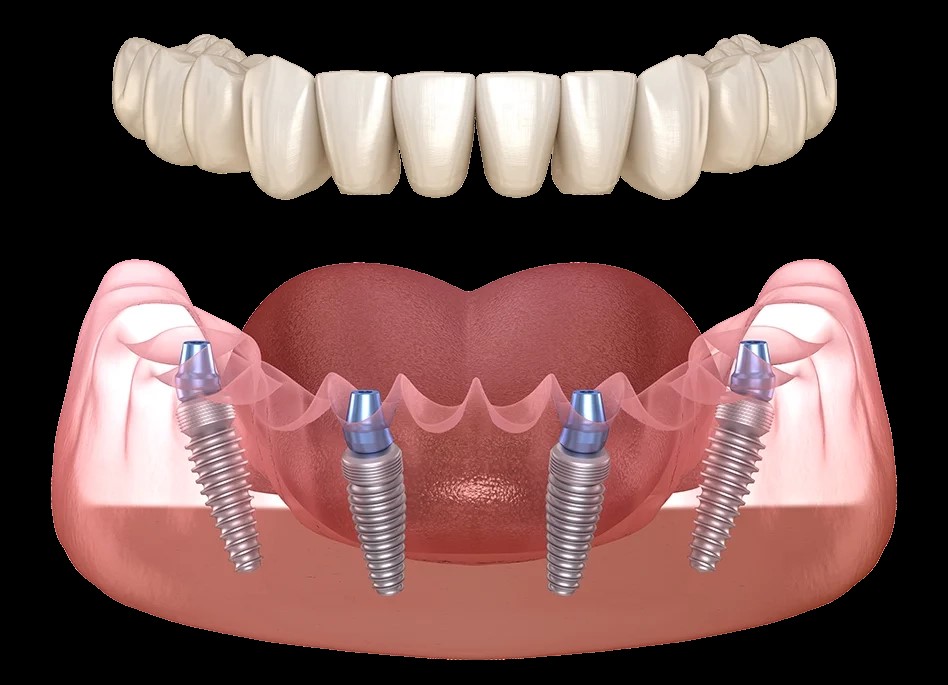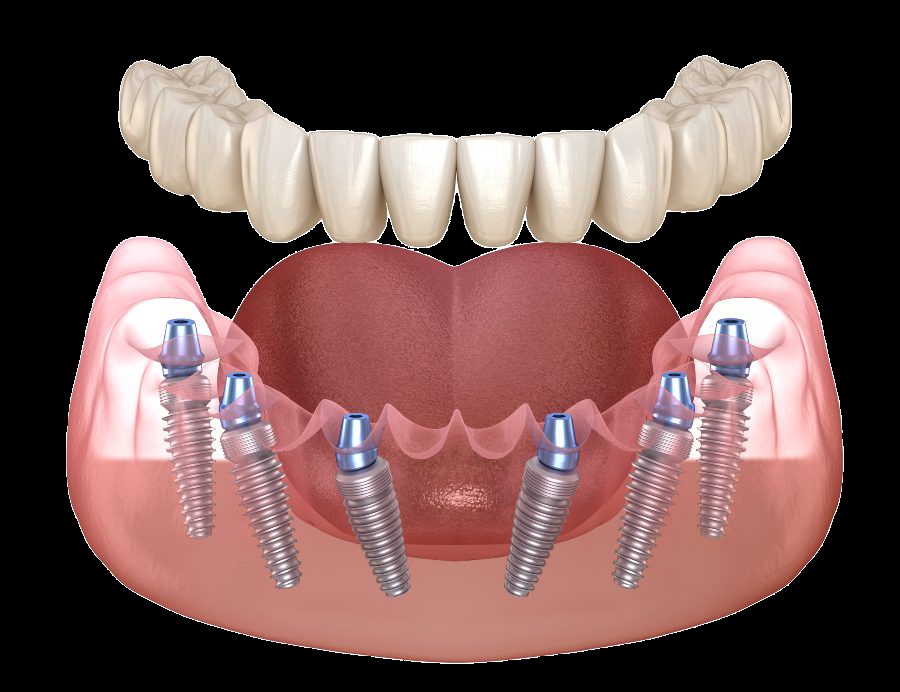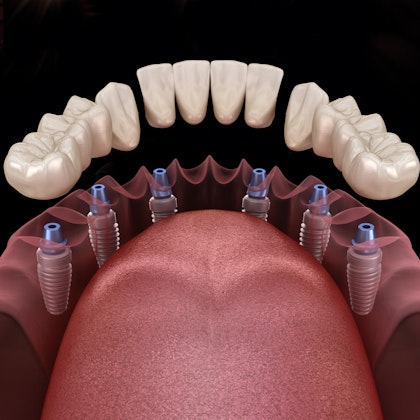
02/10/2024
When getting dental implants, it’s important not only to understand the meaning and procedure of dental implants but also to be aware of the different types of implants. This will help us choose the implant that best suits our dental needs, and we can also take proper care of the implant.
Today, dental implants have been developed in various types to address a wider range of dental problems. The loss of natural teeth due to various reasons such as tooth decay, tooth extraction, gum disease, or accidents not only affects daily life but also impacts self-confidence. Dental implants have become an alternative option to replace the lost natural teeth. For those who have lost all their teeth and want to know what All on 4 implants are and how they differ from Three on Six dental bridges, The Tooth Club will help explain in this article.
All on 4 is a type of fixed dental implant designed to replace all the natural teeth lost in the upper or lower jaw. This technique involves placing four dental implants into the jawbone per arch. In some cases, a dentist may consider placing six implants depending on the bone structure and the patient’s dental issues. These implants serve as a foundation to hold a fixed denture in place, with screws securing the denture to prevent it from shifting. It is an effective alternative to removable dentures, helps slow down bone resorption in the implant area, and preserves the original facial structure.

All on 4

All on 6

3 on Six
Although the All on 4 dental implant solution is suitable for those who have lost all their teeth, it is recommended to consult with a dentist for a detailed diagnosis before deciding. Different types of implants are suited to different dental issues. After the procedure, maintaining proper oral hygiene and following the dentist’s care instructions is crucial to ensure the longevity of your new set of teeth.
When getting dental implants, it’s important not only to understand the meaning and procedure of dental implants but also to …
7 months agoAnother type of dental implant suitable for those who have lost all their teeth is the 3 on six. If …
7 months agoSmall issues like chipped or cracked teeth can have long-term effects on both health and appearance without us even realizing …
7 months ago